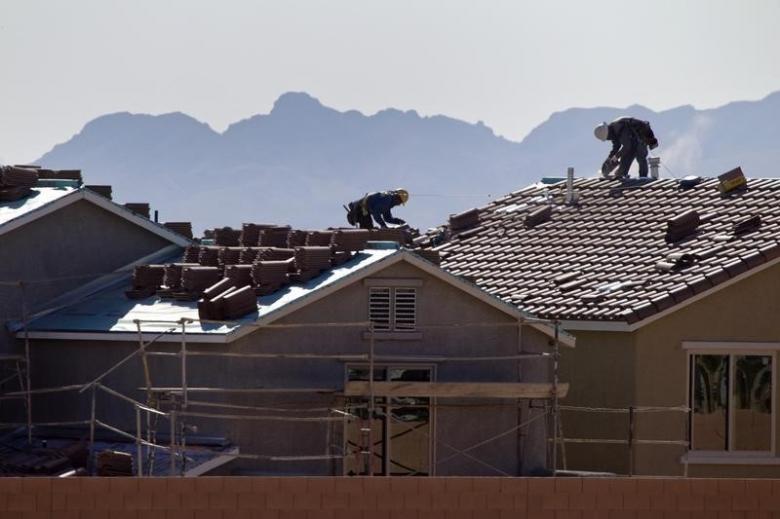- U.S. Housing Starts Fell 9% in September
Housing starts fell for the second straight month in September, but builders received more permits, a sign residential construction could pick up in the coming months.
Building permits issued for privately owned housing units rose 6.3% in September from the prior month to a seasonally adjusted annual rate of 1.225 million, the Commerce Department said Wednesday.
Permits for single-family homes, about 60% of all permits, rose to a rate of 739,000, up 0.4% last month.
Housing starts fell 9.0% in September to an annual rate of 1.047 million, as starts on multifamily buildings dropped sharply. But single-family starts continued to climb, rising 8.1% in September to a rate of 783,000.
Economists surveyed had expected overall September permits to rise to a 1.17 million annual rate and starts to rebound to a 1.18 million pace. Construction typically begins a month or two after a permit is issued.
Monthly housing figures are often choppy and can be subject to large revisions. August permits were revised up to a 1.152 million rate from 1.139 million. August starts were revised to 1.150 million from 1.142 million.
September’s rise in permits, based on a survey of local governments, had a margin of error of 1.9 percentage points. Last month’s decline in starts, based on a survey of builders and homeowners, came with a margin of error of 9.2 percentage points.
Through the first nine months of the year, permits were up 0.6% compared with the same period in 2015, though that mainly reflected a drop in permits for buildings with five or more units. Single-family permits were up 8.1%, year to date.
Starts were up 3.7% through September, and single-family starts were up 8.6% through the nine months.
Both permits and starts fell sharply in the years leading up to the recession, as the housing crisis took hold, and remained near all-time low levels for two years after the recession ended. The construction gauges have rebounded since 2011, but the pace of gains slowed over the past year.
Relatively stronger momentum for single-family home construction suggests that builders are responding to rising prices and steady demand for that segment, while construction of larger multifamily projects is slowing.
Sales of existing homes, about 90% of the housing market, have grown fairly strongly this year, reaching a postrecession peak in June, according to the National Association of Realtors. Steady job growth, wage gains and low interest rates on mortgages have supported home buying. But low inventory of new and existing homes is driving up prices, putting a purchase out of reach of some would-be buyers.
A National Association of Home Builders survey this week showed builders are still fairly confident in the single-family housing market for new homes. The gauge of home-builder sentiment slipped from a year-high of 65 to 63 in October, but still stood at the second-highest level of 2016.
The Realtors group will release data on existing-home sales for September on Thursday. The Commerce Department’s September report on new-home sales is due out Oct. 26.



 Naira4 weeks ago
Naira4 weeks ago


 Naira3 weeks ago
Naira3 weeks ago


 News4 weeks ago
News4 weeks ago
 Travel4 weeks ago
Travel4 weeks ago




 Naira4 weeks ago
Naira4 weeks ago


 Jobs3 weeks ago
Jobs3 weeks ago
 Naira3 weeks ago
Naira3 weeks ago


 Travel3 weeks ago
Travel3 weeks ago




















